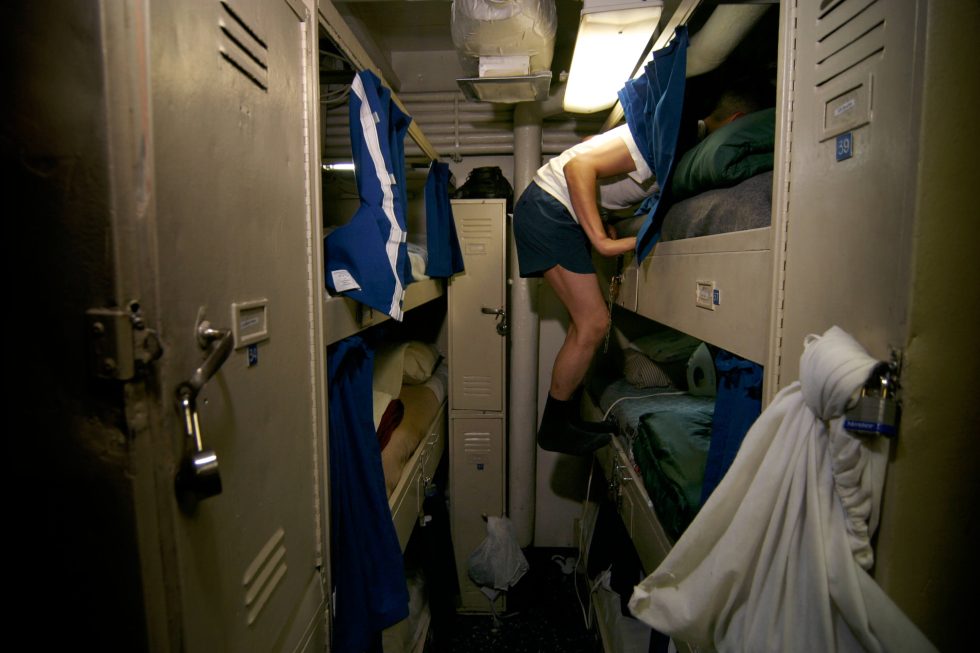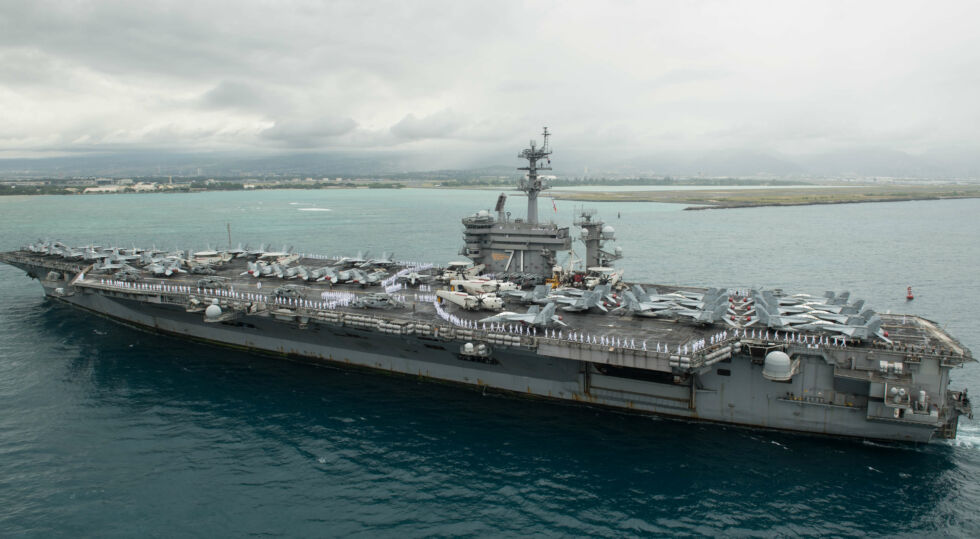
There has been a great deal of outrage expressed over acting Secretary of the Navy Thomas Modly’s decision to “relieve” Captain Brett Crozier of his command over the aircraft carrier USS Theodore Roosevelt after Crozier raised the alarm over a COVID-19 outbreak aboard his ship. Crozier’s letter was leaked to the San Francisco Chronicle, and Modly called the letter "poor judgement" by Crozier.
Modly had said on April 1 that Crozier’s actions "would absolutely not result in any type of retaliation," stressing the need for commanding officers to be candid about their concerns. But that was apparently an April Fool’s prank, as Modly moved the next day to dismiss Crozier because he had gone outside the chain of command.
There are two schools of thought on Crozier’s dismissal. The Navy’s official position is that Crozier stepped out of line by blasting a letter to "20 or 30" people in the Navy, didn’t walk down the passageway to go through his direct superior to elevate the request, and created unneeded panic. His own crew and many observers not hampered by their office believe that Crozier did the right thing and that the Navy—and the Trump administration—are shooting the messenger of bad news.
Meanwhile, President Trump has blamed Crozier for exposing his crew to COVID-19 by making a port visit in Vietnam—a port visit that, given the logistics and diplomacy connected to a visit by a nuclear-powered aircraft carrier, would need to have been directed at a fairly high level within the Department of Defense, in coordination with other parts of the Trump administration. And Crozier has now tested positive for COVID-19 himself.
Crew members of USS Theodore Roosevelt chant the name of Captain Brett Crozier, who was relieved of his command, as he leaves the vessel https://t.co/J3jIGFTSpl pic.twitter.com/hatauz2Fi4
— Reuters (@Reuters) April 4, 2020
Close quarters
Crozier’s letter laid out the problem distinctly in its opening:
If required the USS THEODORE ROOSEVELT would embark all assigned Sailors, set sail, and be ready to fight and beat any adversary that dares challenge the US or our allies. The virus would certainly have an impact, but in combat we are willing to take certain risks that are not acceptable in peacetime. However, we are not at war, and therefore cannot allow a single Sailor to perish as a result of this pandemic unnecessarily. Decisive action is required now in order to comply with CDC and NAVADMIN 083/20 guidance [the Navy-wide instruction issued on COVID-19] and prevent tragic outcomes.
Crozier cited some of the conclusions about the spread of COVID-19 aboard the Diamond Princess cruise ship in urging for putting the majority of the crew ashore. An aircraft carrier is an even more conducive environment for the spread of a pathogen than a cruise ship. Fully crewed, the Roosevelt is home to over 5,000 sailors and airmen, who live literally stacked on top of each other—sleeping in “racks,” often stacked three high, with dozens of people per berthing compartment, and working and living in spaces and passageways so narrow that "social distancing" is impossible.
As Crozier said in his letter, "Due to the close quarters required on a warship and the current number of positive cases, every single Sailor, regardless of rank, on board the TR must be considered 'close contact' [based on the Navy’s administrative guidance on COVID-19]." That meant that the entire crew should technically be under isolation or quarantine for 14 days or more—requiring that they be quartered in single-person barracks or hotel rooms with individual bathrooms. That obviously cannot happen aboard ship. And as a result, Crozier wrote, “The spread of the disease is ongoing and accelerating.”
According to individuals familiar with what’s going on within the Navy, Crozier had made multiple requests for resources to move more people off the ship. But the Navy’s response had focused on testing crewmembers rather than isolating them—the Roosevelt is currently in Guam, and off-ship quarters are in short supply.
Crozier was concerned that the crew wasn’t being moved off quickly enough—which prompted him to write the letter. As nimble as modern aircraft carriers may be, it takes a while to turn the entire Navy around to deal with something the scale of COVID-19.
The problem with Crozier’s letter, according to Modly, is that he never informed his direct boss—Carrier Strike Group Commander Rear Admiral Stuart Baker, who was aboard the Roosevelt and “right down the passageway from him”—that he was going to send it. The letter "was sent outside the chain of command, at the same time the rest of the Navy was fully responding," Modly said. "Worse, the Captain’s actions made his Sailors, their families, and many in the public believe that his letter was the only reason help from our larger Navy family was forthcoming, which was hardly the case."

One neck to choke
Commanding officers and other people in positions of leadership within the military are relieved of duty with a frequency most people aren’t aware of. Generally speaking, if something goes wrong on a ship—regardless of whether the commanding officer played a direct role in it—the captain gets fired, whether he was asleep in his cabin at the time or not. Captains can delegate authority to those below them in the chain of command, but they cannot delegate responsibility.
However, the call to fire a CO is usually made within the military leadership directly above them and almost never escalated to the level of the Secretary of the Navy or Secretary of Defense. CNN reports that the Chief of Naval Operations Admiral Mike Gilday and other senior Navy leaders also advised Modly against relieving Crozier of command before an investigation was conducted. Clearly, these are unusual times.
Modly has his job because his predecessor was fired for what Secretary of Defense Mark Esper saw as "poor judgement" in his handling of the case of SEAL Chief Petty Officer Edward Gallagher—a case that President Donald Trump openly interfered in. And regardless of the decidedly non-partisan nature of the COVID-19 pandemic, the Navy’s management of it has become a very political issue.
Then again, aircraft carriers are very political—they are different commands from the rest of the fleet. Carriers are the very center of the Navy’s power-projection capabilities and the nuclear-powered fulcrum upon which the Navy’s warfighting doctrine is built. Commanding a carrier is generally seen as the last stop before promotion to flag rank in the career path of Navy aviation and surface warfare officers.

And Modly did not make the decision without input from the whole of Crozier’s chain of command. Modly said on April 2 that conversations with senior Navy officers, and with Crozier himself, led him to the conclusion that "Captain Crozier had allowed the complexity of his challenge with COVID breakout on the ship to overwhelm his ability to act professionally, when acting professionally was what was needed most... We do, and we should, expect more from the Commanding Officers of our aircraft carriers."
While Modly said he believed Crozier did what he thought was in the best interests of the safety and well-being of his crew, his letter "did the opposite," causing panic, raising "concerns about the operational capabilities and operational security of the ship that could have emboldened our adversaries to seek advantage," and undermining the authority of those above him in the chain of command "who had been moving and adjusting as rapidly as possible to get him the help he needed."
Who’s overreacting?
In other words, Crozier did what he should have done, but what he did was wrong. It’s the kind of Catch-22 that has ended many a military career.
I’ve spoken to many people who have served in the Navy and other services, and the concerns expressed about Crozier’s firing are basically two-fold. The first is that relieving him sends the exact opposite message to commanding officers—and all officers, in fact—across the military than what Modly stated earlier in the week: that the letter was the right thing to do and that commanding officers need to be candid with their superiors about what they see as problems.
The second is that Modly and the Navy had a lot of other things they could have done short of relieving Crozier in the midst of a health crisis aboard his ship. Was his sense of urgency for his crew really unprofessional? It’s not clear who leaked Crozier’s letter to the media, but it’s unlikely it was Crozier himself. And given this administration’s direct interference in the Navy over the past year, it’s hard to say what “professionalism” is at this point.
Crozier’s crew certainly seems to think that he did the right thing.
Updated to include relevant information reported by CNN.
reader comments
489